Comparison of the usability of modern browsers with the old Opera

This article is a few recollections of the rich functionality of the old Opera. But in it I want to collect things that were unique to the old Opera. I still have Opera 12 installed, which my hand does not rise to remove, although I do not use it already.
For me, Old Opera was almost a browser standard. It has implemented so many wonderful things, which for some reason are not present in modern browsers, that sometimes it’s amazing to see why no one realizes such bright ideas.
A little over a year ago, Opera announced that they were making a new browser based on the Chromium fork from Google (Blink).
A year has passed, but from that User Experience that was before, Opera oh how far, the pathetic little brother of Chrome. Even the relatively young Yandex.Browser is developing much faster and has its own face. I will compare the old Opera with Chrome, as a representative of browsers on WebKit and Blink, and Firefox. And please note that this is, after all, my personal opinion.
Caution, a lot of pictures.
So, what was so beautiful about the Opera. I will not go into details about how their Presto engine works; I will describe it from the point of view of a user who has been using the Opera for 11 or 12 years.
1. Normal selection of text on the page
The text in the browser should stand out normally. Without aiming, without tantrums like WebKit / Blink, without capturing neighboring elements. Just stand out.
How old Opera selects text

Modern browsers on WebKit (Chrome, Opera Blink, Safari) and Firefox do not know how to do this. Highlighting a paragraph normally in them is a whole problem, for some reason they pull a bunch of other content on the page, and you need to aim as a sniper every time to highlight something. I only need a paragraph, not half a page. I do not know why in 2014 this allocation still works so clumsily. But, in my opinion, this is terrible.
How Chrome text is highlighted

How Firefox Text Is Highlighted

Dear browser makers. Every day you use the browser not only for work, but also as a user. Have you never noticed?
2. Highlighting text in a link
Modern browsers for some reason drag the link, but do not select the text in it. Personally, I’ve never in my life needed to drag a link somewhere. If I need a link URL - I just copy it through the context menu. There are 2 ways to get the URL, and not one to highlight the text in the link.
Highlight link text in old Opera

Now take a look at the rest:
Highlight link text in Chrome

Highlight link text in Firefox

But what if in the title link I came across some unknown word / name that I wanted to google? how can I just tear it out of the link? Copy all link text and rip out? Or through the page code inspector? Why can't you just make a selection?
3. Downloading files and opening them
In the old Opera, when downloading a file, you immediately see the choice - download the file, open the file (which is important - with the choice of the application in which to open it). This is logical. When downloading a file, most often I just want to open it or just save it. If this is the installer of the program, then I don’t feel like storing the distribution of the file in the Downloads, I just want to run it, install the program and that's it, let the distribution lie in the browser’s cache and will be erased when it comes time to automatically clear the cache.

If I press Save - then they offer me - where to save. This point is, of course, controversial. It’s faster and more convenient for someone to save files in the same place that is configured by default (Downloads, for example), for someone it’s more convenient to choose an save location. Personally, the latter is closer to me.
What do modern browsers do?
Firefox is close to Opera - it offers to open a file with a choice of an application or save it without a choice of location. Bravo, Firefox.
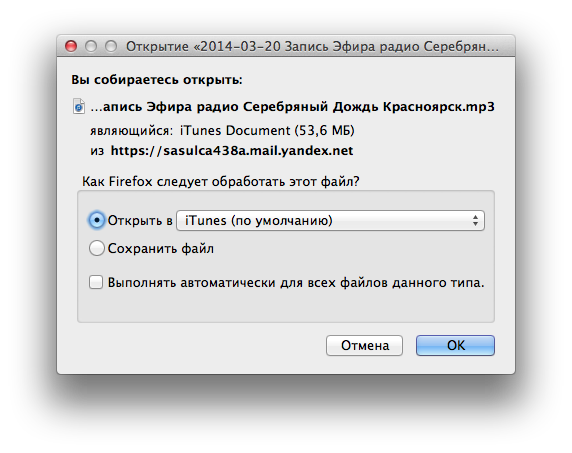
Chrome and WebKit / Blink browsers simply save the file. There, where configured to save, in the default downloads. When the file is downloaded, you can poke on it and it will open in some way.

You cannot choose where to open it. It just opens in an application that matches this type. This, of course, is convenient in many cases. But what, I want to open mp3 not in a standard player, but in another? I have to poke “show this file”, poke on it with the right button and choose where to open it. In this case, a bunch of unnecessary actions are performed.
Option Opera and Firefox seem to me much more convenient. Somewhere more clicks, somewhere less, depending on the scenario. But both of them allow you to make all the options approximately equally quickly. And WebKit / Blink-browsers - or as many actions, or a lot of actions.
4. Image Properties
I don’t know how useful this function is to others, but I liked that you could right-click on the image, select “Image Properties” and see detailed information about it. This is especially useful when viewing photos:

Firstly,
Secondly, EXIF image information is visible. I wanted to know what the photo was taken and with what settings - everything is there.
Thirdly, there is an image URL and a Description immediately (alt = "" attribute in the img tag). A trifle, but nice.
5. Download indicators
Just compare the information content.
Opera:

Firefox:

In Chrome, everything is about the same as in Firefox.
It would seem a trifle, but somehow you better understand what happens when the page loads.
6. Disable pictures
The days of slow home Internet have passed and the days of slow mobile Internet have come. If you need to find something on the Internet from a computer, and you only have a mobile phone, which, for example, doesn’t catch well, then Firefox will simply not turn off images without special extensions. Sit and wait while the page loads and your traffic eats.
In Chrome, you can disable images, again various methods of traffic compression in the same Opera / Yandex Browser and others appeared. But sometimes you just need to turn off the pictures due to the need for speed.
Chrome: you need to go to the settings and look for
Firefox there : you need the extension for the
Opera browser : context menu (View-> Images)
And now - what should I do if I need to show a particular image on the page? Copying its URL and opening it in a new tab is inconvenient.
In Opera - you can show a specific picture:
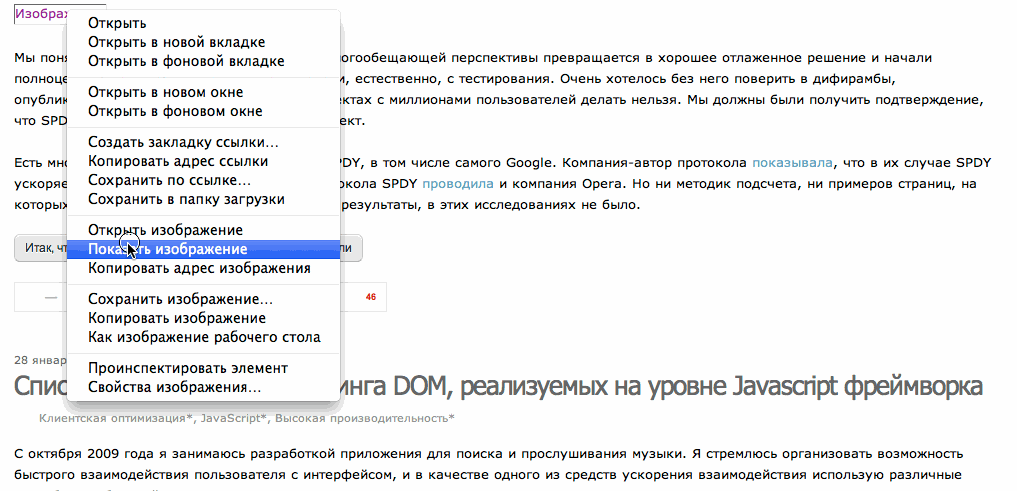
Moreover, after that, Opera went into the "Show cached images" mode. This simply does not exist in other browsers - either everything or nothing. And here you can show what is already in the cache and not clog the channel with new images. Damn convenient with limited traffic and / or slow connection.
7. Convenient display of RSS feeds
Just compare:
Chrome (and Opera Blink) shows XML

Firefox - slimy tape recordings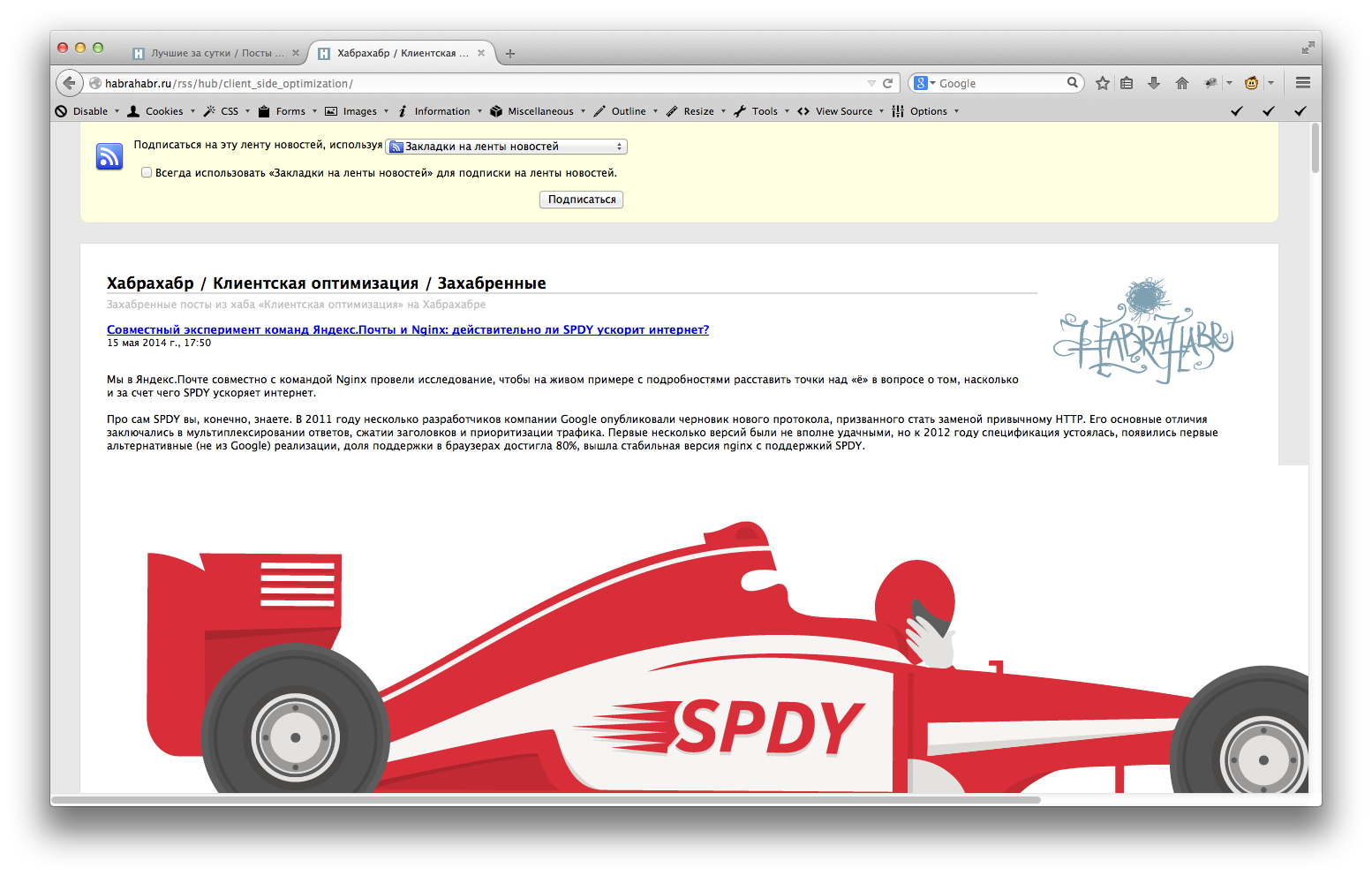

Old Opera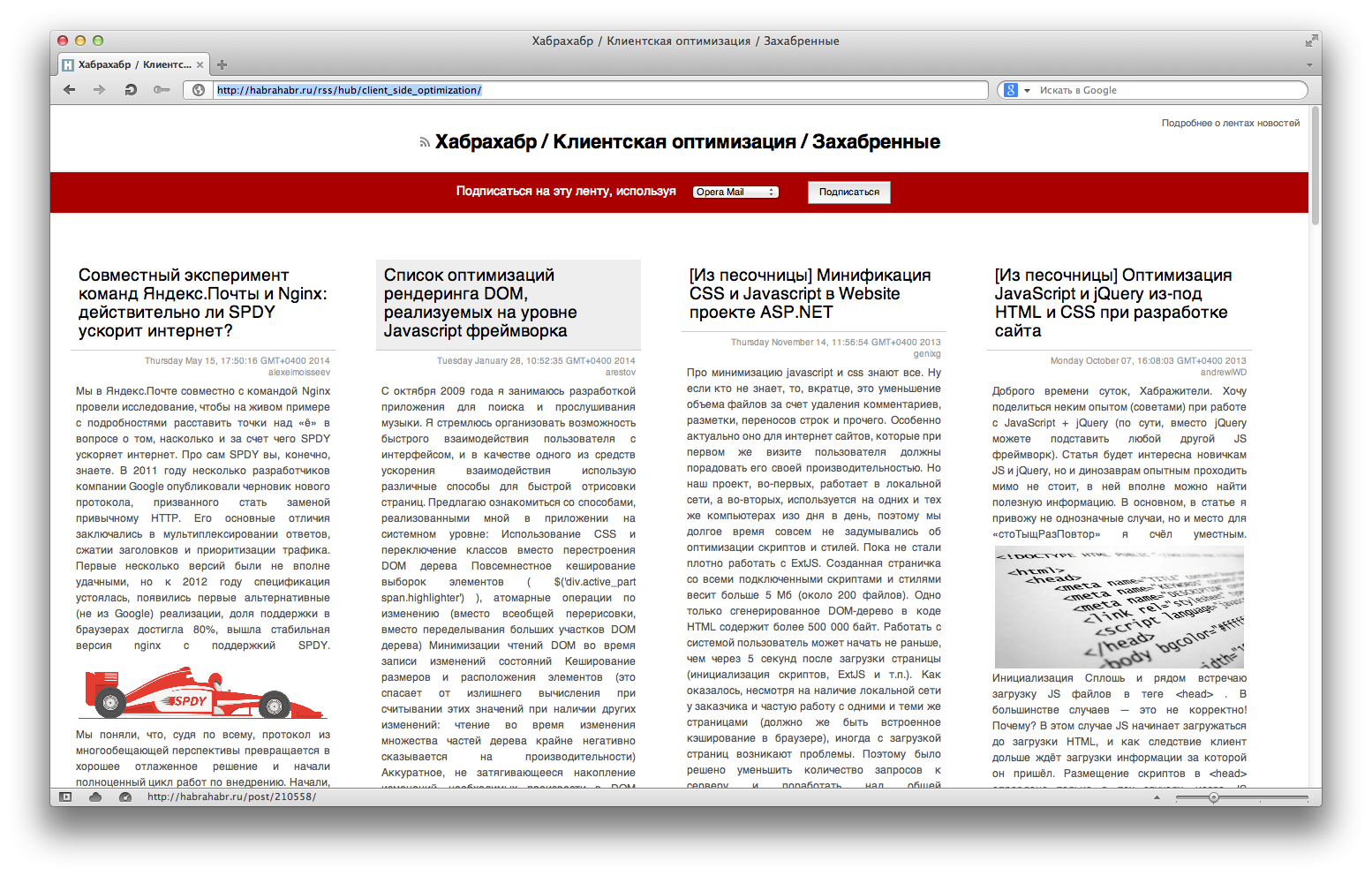

Damn, Opera, you did everything for people before! Why did you stop doing this?
8. Switch tabs
Someone thinks that the CTRL + number (CMD + number on Mac) keyboard shortcuts should switch already opened tabs in the account in the browser. In the old Opera (and now also in Safari), these keyboard shortcuts opened bookmarks from the express panel (in Safari - bookmarks). Personally, it seemed damn convenient to me. He went to the computer and immediately opened 4-5 tabs with just the keyboard - CTRL + T -> CTRL + 1, CTRL + T -> CTRL + 2 with sites that I visit most often and which I set up myself, and not some algorithm in the browser.
But, of course, this is a very controversial issue and a matter of taste, it is useless to argue here. But! In switching between Opera tabs, there was still a great thing - this is CTRL + Tab - this is already switching between open tabs. It would seem to be a simple task, only in the old Opera it worked in much the same way as switching between applications in the OS, that is, the tabs switch not stupidly in order, but taking into account which ones were opened last.
Switch between windows on Mac OS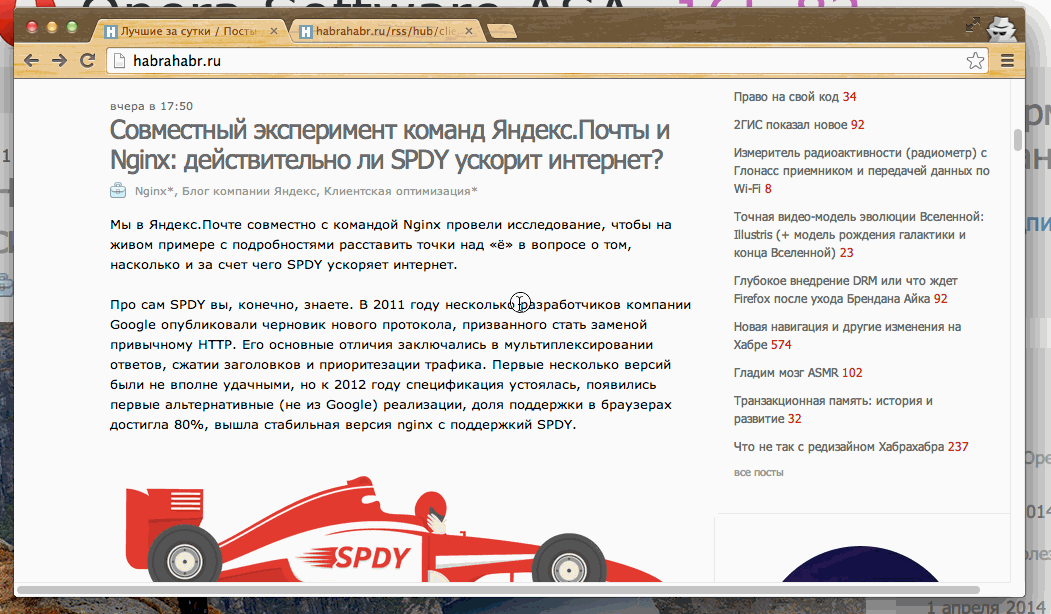

Switching between tabs in the old Opera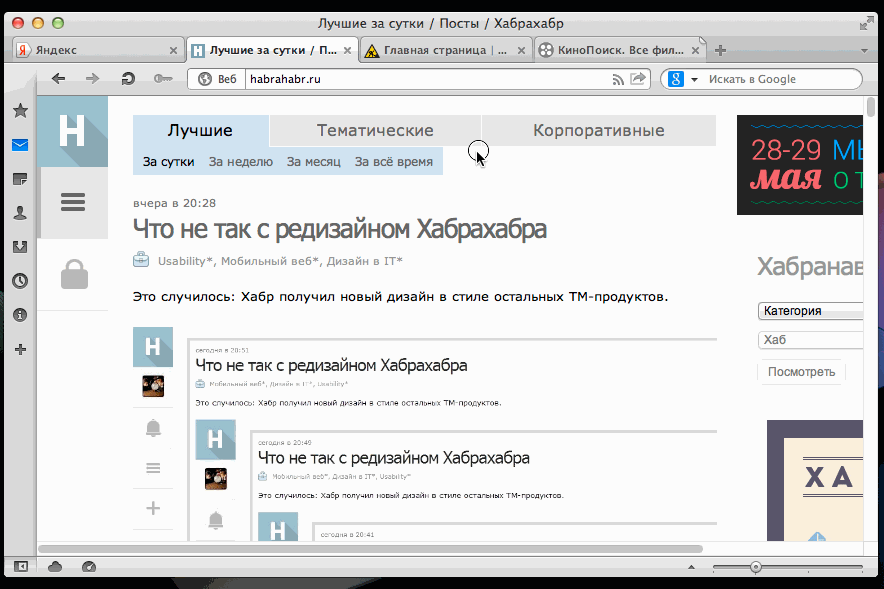

This is incredibly convenient! But Chrome and Firefox consider switching tabs in order. If you have 20 tabs open, and you need to go back to the previous one, scroll through the entire list by busting, and with the CTRL + number keys you won’t get to it if it is, for example, the 15th in a row.
Total
Something that Opera introduced the first or one of the first, migrated over time to modern browsers. Tabs, synchronization of everything and everything.
I listed in the post only those little things that I miss in modern browsers. But these little things add up to usability. And how much convenient is left behind.
Built-in ad / content blocker, built-in torrent client, built-in email client (which seems to have been selected as a separate product), built-in RSS reader, own scripts and styles for websites, once I even sat on IRC channels through the built-in to opera client.
Of course, now such harvesters may not be needed, because there are a bunch of extensions for browsers. But some little things relating specifically to the simple use of the browser for its intended purpose - they have sunk into oblivion.
I watched a year how the new Opera was developing, honestly used it, but a year passed - and in many ways it’s still there. It is sad that having such an experience, successful (and most importantly, implemented) ideas, Opera took many steps back and does not go forward.
Modern browsers have stepped far ahead in technology, but still do not reach the convenience of the old Opera, which, unfortunately, began to fall so often a few years ago that I had to look for a replacement for it. A few years later, the hope of a good browser faded :(
Surely you yourself in the comments will be able to supplement the list of important pleasant things that you are missing.
Only registered users can participate in the survey. Please come in.
Do you still use the old Opera?
- 28.7% Use 1598
- 40.1% went to another browser 2230
- 21.2% Never Used 1180
- 29.3% I cherish the hope that the new Opera will be able 1632
